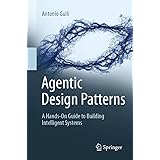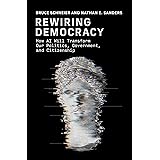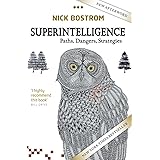The field of archaeological conservation frequently confronts the immense challenge of preserving historical artifacts that are on the brink of disintegration. Recovering and stabilizing these fragile remnants of the past requires not only profound historical knowledge but also advanced scientific techniques and painstaking dedication. As Dr. Evelyn Reed highlights in the video above, the meticulous process of uncovering and restoring objects, even those seemingly modest, can unlock invaluable insights into bygone eras. Indeed, the very essence of understanding our ancestors’ lives often hinges on our capacity to safeguard the physical traces they left behind, demanding a concerted effort from the moment of discovery through long-term preservation.
The solution to this complex issue lies in the application of specialized conservation science and rigorous methodological approaches, which ensure that artifacts’ inherent historical integrity remains uncompromised. This endeavor necessitates a deep understanding of material science, environmental factors, and ethical considerations unique to cultural heritage. Consequently, the work detailed in the interview, particularly regarding the early colonial craftsmanship unearthed in 2018, exemplifies the dedication required to transform fragile fragments into tangible historical narratives. It showcases how dedicated professionals navigate the delicate balance between scientific intervention and respectful preservation of an artifact’s original state.
Unearthing the Past: The Significance of Colonial Artifacts
Colonial artifacts, as discussed by Dr. Reed, often appear modest at first glance, yet they hold profound significance for historical understanding. These everyday objects—be it fragments of pottery, tools, or building materials—provide a tangible link to the lives and practices of early settlers. Unlike grander monuments or well-documented events, these smaller pieces frequently illuminate the nuanced details of daily existence, including economic activities, social hierarchies, and the challenges of adapting to new environments. Researchers can deduce patterns of trade, local craftsmanship skills, and even dietary habits from what might initially seem like insignificant shards, transforming them into vital historical documents.
Furthermore, these artifacts can offer alternative perspectives that complement written records, which often reflect the viewpoints of the elite or specific factions. The resilience and resourcefulness inherent in early colonial craftsmanship become palpable when one studies these objects, reflecting the ingenuity required to forge a new life. Therefore, the dedication to recovering and preserving these fragments ensures that a more complete and multifaceted narrative of colonial life can be constructed, moving beyond generalized accounts to specific, human experiences. Each etched line and weathered chip truly tells a story, patiently waiting to be deciphered by skilled archivists and historians.
The Perilous Journey: Challenges in Archaeological Preservation
The journey from discovery to display for historical artifacts is fraught with significant challenges, especially when dealing with extreme fragility, as highlighted by Dr. Reed regarding the 2018 excavation findings. Artifacts buried for centuries are susceptible to severe material degradation, a process influenced by a multitude of environmental factors. Soil composition, for instance, can drastically alter an object’s chemical and physical stability; acidic soils accelerate decomposition, while highly alkaline conditions can cause other forms of deterioration. Consequently, many organic materials such as wood, textiles, and even some metals often emerge from the ground in an alarmingly deteriorated state, sometimes almost to dust.
Moreover, the very act of excavation poses a risk to these delicate items, as removal from their stable burial environment can expose them to sudden changes in humidity, temperature, and oxygen, accelerating their decay. This rapid post-excavation deterioration necessitates immediate, careful handling and preliminary stabilization measures on-site. The unexpected discovery of these particular fragments beneath a much later structure further complicated their recovery, requiring adaptive strategies and heightened caution to prevent further damage. Such conditions demand an immediate assessment of material stability and the deployment of specialized tools, underscoring the dynamic and often unpredictable nature of archaeological fieldwork.
Micro-Consolidation: A Synthesis of Art and Science in Conservation
In response to the extreme fragility of certain artifacts, micro-consolidation techniques represent a pinnacle of conservation science, directly addressing the material degradation that can turn historical objects into dust. This advanced method involves carefully introducing a consolidant—often a polymer solution—into the microscopic pores and fissures of the deteriorated material. The goal is to strengthen the artifact’s internal structure without altering its appearance, chemical composition, or historical integrity. Specialized tools, frequently custom-designed for specific projects, are indispensable for this delicate process, allowing for precise application and minimal intervention.
The principles guiding micro-consolidation are stringent, emphasizing reversibility, minimal aesthetic impact, and long-term stability. Conservators must conduct extensive material analysis to select a consolidant compatible with the artifact’s original components and its environment. This painstaking effort often extends over many months in a controlled laboratory setting, reflecting the complexity of stabilizing materials that have succumbed to centuries of wear and decay. For example, some conservation projects have reported stabilization periods ranging from six months to over a year for highly degraded organic artifacts, underscoring the time-intensive nature of such precise work. Therefore, the patience and expertise of conservation scientists are paramount in ensuring the successful preservation of these invaluable historical fragments.
Upholding Historical Integrity: The Ethos of Conservation
The conversation around artifact preservation consistently returns to the critical imperative of maintaining the inherent historical integrity of each object. This principle dictates that conservation interventions should stabilize and protect an artifact without fabricating, reinterpreting, or significantly altering its original form or evidence. Ethical conservation practices prioritize minimal intervention, ensuring that any treatment is reversible and fully documented, allowing future generations of researchers to distinguish original material from conservation work. This commitment safeguards the artifact’s authenticity as a primary historical source, preserving its evidentiary value for ongoing and future study.
Moreover, every etched line and weathered chip on an artifact provides unique insights into its past life, use, and the passage of time. To inadvertently alter these features during preservation would be to erase parts of its story, diminishing its potential for historical interpretation. Consequently, conservators employ a rigorous methodology, which often includes comprehensive photographic records, detailed written reports, and scientific analysis before, during, and after treatment. This meticulous documentation ensures transparency and accountability, affirming the artifact’s original condition and the precise nature of all conservation efforts. Ultimately, upholding historical integrity is not merely a technical requirement but a profound ethical responsibility to the past.
Beyond the Dig: The Broader Impact of Archaeological Preservation
The meticulous work of archaeological preservation extends far beyond the confines of the excavation site and the laboratory, contributing significantly to public education and academic research. Preserved artifacts become cornerstones for museum exhibitions, allowing diverse audiences to physically connect with history and understand the human experience across time. For example, a well-preserved collection of early colonial craftsmanship can vividly illustrate the daily lives, challenges, and innovations of settlers, fostering a deeper appreciation for their resourcefulness and adaptation. Such tangible connections enhance cultural identity and offer profound insights into societal evolution.
Academically, accessible and ethically preserved collections provide invaluable material for ongoing scholarly inquiry, enabling new discoveries and reinterpretations as research methodologies advance. Material analysis can reveal previously unknown trade routes, technological transfer, or cultural exchanges that were not evident from written records alone. Furthermore, the techniques developed for archaeological artifact preservation often have broader applications in heritage management, informing best practices for safeguarding diverse cultural assets globally. Consequently, the continuous effort to protect these fragile historical treasures ensures that our collective human story remains vibrant, accessible, and continuously open to new understanding for generations to come.









